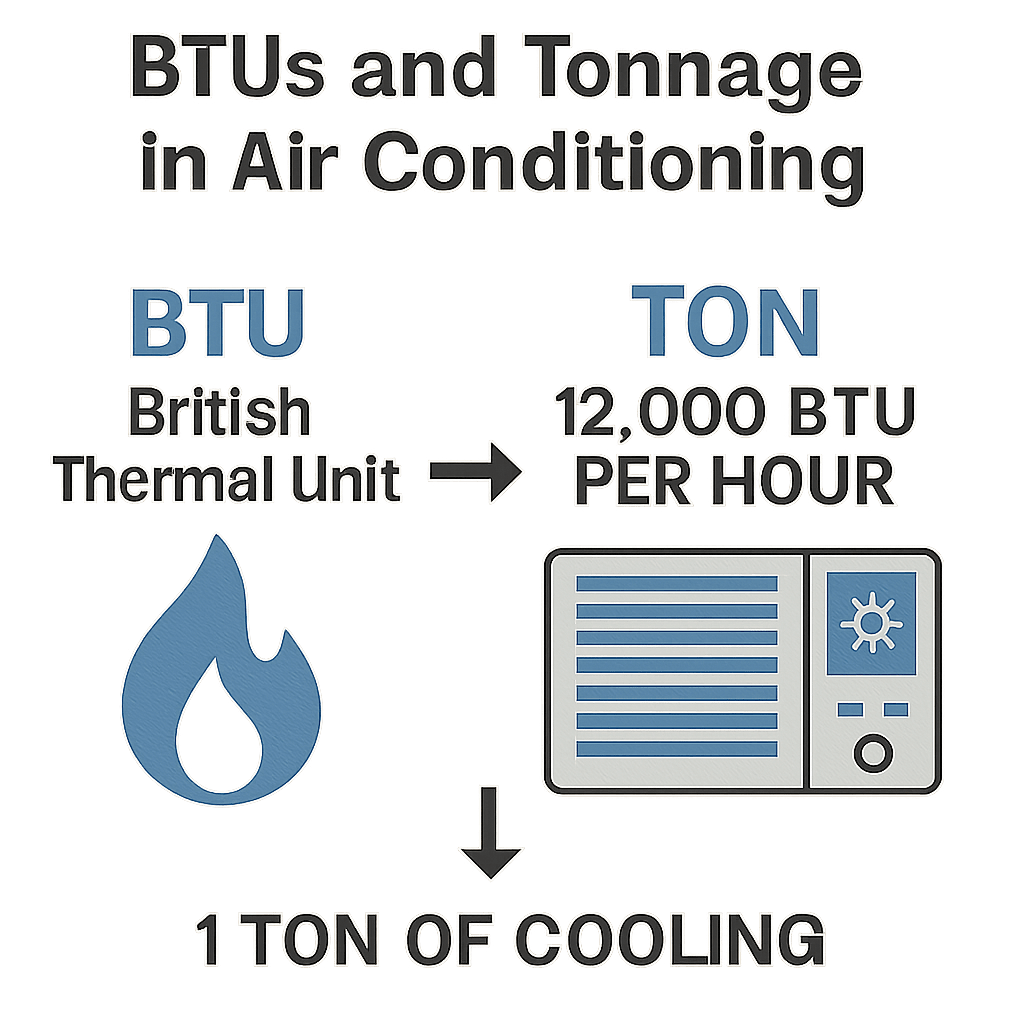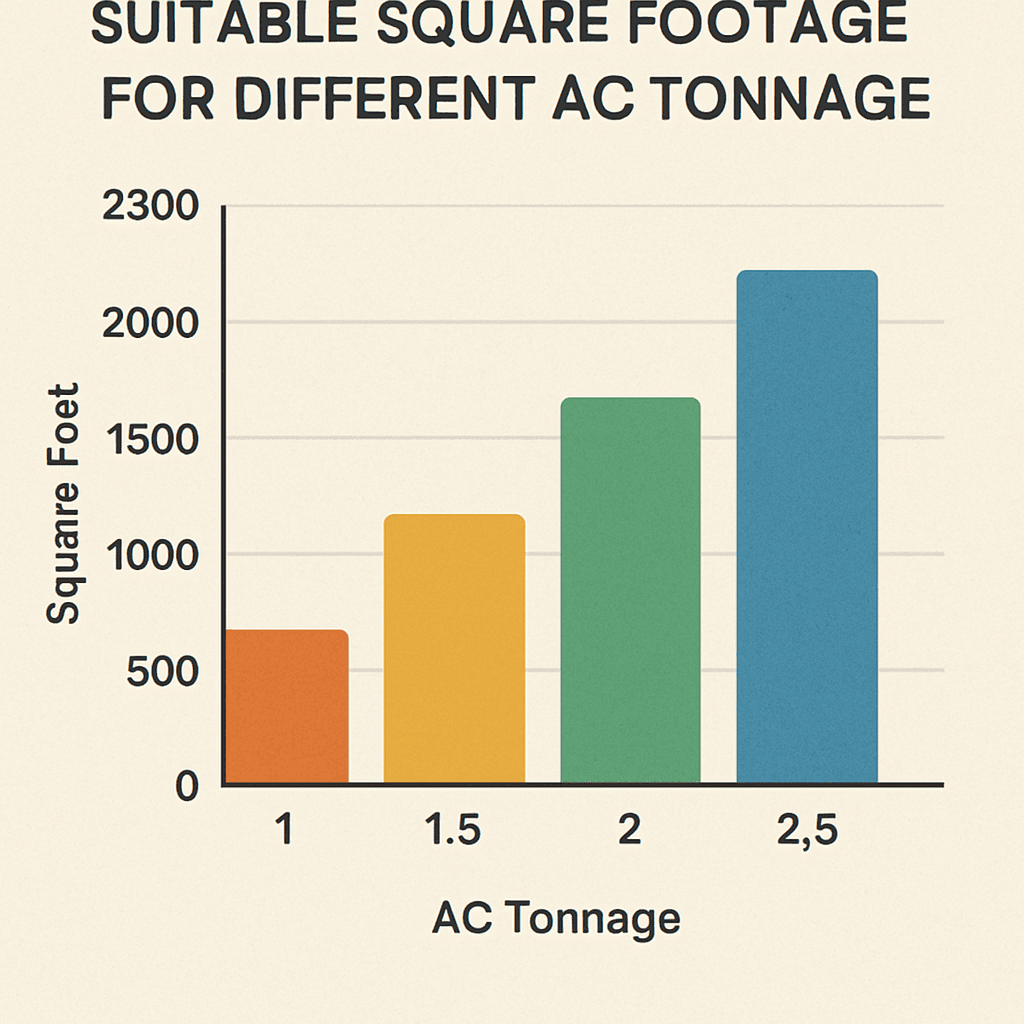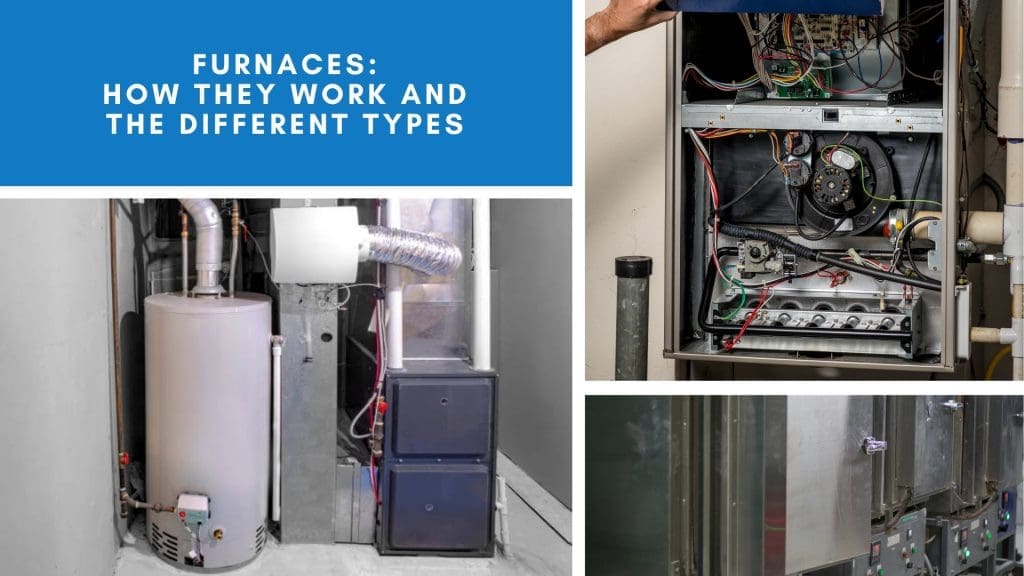Choosing the right air conditioner for your home can be daunting. With so many options, it’s easy to feel overwhelmed. Understanding the basics can make the decision easier.
A 2 1/2 ton air conditioner is a popular choice for many homeowners. It offers a balance of cooling power and efficiency. But what does “2 1/2 ton” really mean?
In air conditioning, “ton” refers to the unit’s cooling capacity, not its weight. This capacity is crucial for maintaining comfort in your home. A 2 1/2 ton unit can effectively cool spaces between 1,200 to 1,500 square feet.

Knowing the right size for your home is essential. An undersized unit will struggle to cool your space, while an oversized one can waste energy. This guide will help you understand if a 2 1/2 ton unit is right for you.
We’ll explore the features, benefits, and costs of these units. You’ll also learn how they compare to other sizes. By the end, you’ll have the knowledge to make an informed decision. Let’s dive into the world of 2 1/2 ton air conditioners.
What Does “2 1/2 Ton” Mean in Air Conditioning?
When discussing air conditioners, the term “ton” may seem confusing. It’s not about the machine’s weight. Instead, it measures the cooling capacity.
A single ton of air conditioning can remove 12,000 BTUs (British Thermal Units) of heat per hour. Therefore, a 2 1/2 ton unit can remove 30,000 BTUs of heat hourly. This capability is crucial for achieving desired comfort levels in your home.
To visualize it better, here’s a simple breakdown:
- 1 Ton: Removes 12,000 BTUs per hour
- 2 1/2 Ton: Removes 30,000 BTUs per hour
This capacity ensures a suitable cooling experience. The unit must match the space it cools to maintain efficiency. The right size keeps your home comfortable without overworking the system.
Selecting the proper size impacts comfort and energy bills. An ill-fitted unit can lead to higher costs and reduced lifespan. Thus, understanding this concept helps in making the best choice.
Consider various factors like home size and insulation quality when choosing an AC unit. Remember, a knowledgeable decision leads to long-term satisfaction. So, understanding what “2 1/2 ton” signifies is an essential first step in your air conditioning journey.

How Much Cooling Power Does a 2 1/2 Ton AC Provide?
A 2 1/2 ton air conditioner offers significant cooling capacity. It is ideal for spaces between 1,200 to 1,500 square feet. This capacity ensures the unit can efficiently manage the temperature in mid-sized homes.
The cooling power is quantified by BTUs. A 2 1/2 ton unit can remove 30,000 BTUs of heat each hour. Such power is critical for maintaining optimal comfort during hot months.
Consider the following factors when assessing cooling needs:
- Square footage of your home
- Insulation quality
- Local climate conditions
These elements help determine if a 2 1/2 ton unit is suitable. Insufficient cooling power can strain the system, reducing efficiency and increasing costs. Therefore, proper sizing is vital.
Selecting the right air conditioner size ensures energy efficiency. This leads to lower energy bills and prolongs the unit’s life. When chosen correctly, the 2 1/2 ton model effectively balances cooling demands with energy use.

Is a 2 1/2 Ton Air Conditioner Right for My Home?
Determining the right air conditioner size for your home is crucial. A 2 1/2 ton unit might be perfect, but several factors need consideration. Matching the air conditioner to your home size ensures optimal efficiency and comfort.
Begin by assessing your home’s square footage. A 2 1/2 ton air conditioner is typically suited for areas between 1,200 to 1,500 square feet. However, square footage isn’t the only consideration.
Factors to evaluate include:
- Insulation quality
- Sun exposure and window types
- Ceiling height
These factors can affect how well your home retains or loses cool air. For instance, poor insulation requires more cooling power. The geographic location also plays a role. Hotter climates demand more cooling capacity.
Discuss your needs with an HVAC professional. They can provide a detailed assessment, ensuring your choice aligns with your specific situation. Proper sizing avoids problems like inefficient cooling or wasted energy.
A well-suited air conditioner prevents short cycling. This common issue arises when a unit is too large for a space, leading to frequent on-and-off cycles. Ensuring compatibility protects your investment and promotes long-term savings and comfort.
Comparing 2 1/2 Ton AC Units to Other Sizes (2, 3, 5, and 8 Ton)
Choosing the correct air conditioner size goes beyond just fitting your space. It’s about balancing efficiency, cost, and personal comfort. Each unit size offers different cooling capacities and energy consumption levels.
Let’s explore several common sizes:
2 Ton Units: Suitable for smaller spaces, typically less than 1,200 square feet. They are an energy-efficient choice for compact homes or apartments.
3 Ton Units: Ideal for larger homes or spaces between 1,500 to 1,800 square feet. They provide additional cooling power without a significant jump in energy costs.
5 Ton Units: These fit medium to large homes, often exceeding 2,000 square feet. They’re perfect if your home has higher sun exposure or poor insulation.
8 Ton Units: Reserved for very large homes or small commercial spaces. Such units are overkill for most residential needs unless the area is exceptionally large.
When comparing these, consider:
- Energy costs can significantly increase with larger units.
- A 2 1/2 ton unit sits comfortably in the middle, balancing performance and efficiency.
- Climate plays a crucial role; hotter regions may require higher capacities.
Consulting with an HVAC professional is crucial. They will help you navigate these choices based on a detailed assessment of your home’s specific needs. Making an informed decision can mean the difference between comfort and constant hassle.
Key Features and Benefits of Modern 2 1/2 Ton AC Units
Modern 2 1/2 ton air conditioners have evolved, offering numerous benefits that older models might lack. They blend efficiency with comfort, making them a popular choice for many homeowners.
One of the standout features is their enhanced energy efficiency. Modern units often come equipped with higher SEER ratings, translating to reduced electricity bills and a smaller environmental footprint.
Today’s models also boast advanced technology like smart thermostats. These features allow for precise temperature control, ensuring your home remains comfortable without unnecessary energy use.
Noise reduction is another significant benefit. Newer units operate much quieter than older models, allowing for peaceful indoor environments. This aspect is especially important in homes where tranquility is valued.
- Energy Efficiency: Saves on energy bills
- Smart Technology: Offers precise control
- Noise Reduction: Quieter operation
- Improved Air Quality: Features enhance living conditions
- Environmentally Friendly: Reduced energy consumption
Additionally, modern systems often improve indoor air quality. High-quality filters and ventilation options reduce allergens and pollutants, offering a healthier living environment.
Understanding SEER Ratings and Energy Efficiency
When choosing an air conditioner, SEER ratings are a critical factor. SEER stands for Seasonal Energy Efficiency Ratio, which indicates how efficiently an air conditioner uses energy over an entire season.
The higher the SEER rating, the more energy-efficient the unit is. This efficiency can result in lower utility bills and is increasingly important as energy costs rise.
A modern 2 1/2 ton unit with a high SEER rating can be a valuable investment. It offers the potential for significant cost savings and contributes to a smaller environmental footprint.
Choosing a unit with a SEER rating of at least 15 is recommended for optimal efficiency. This choice balances initial costs with long-term savings.
- SEER Importance: Measures seasonal efficiency
- Higher SEER Benefits: Greater energy savings
- Long-Term Savings: Reduces monthly bills
- Environmental Impact: Lowers carbon footprint
Prioritizing energy efficiency not only saves money but also aligns with sustainable living practices. It’s a win-win choice for both your wallet and the planet.
Cost Breakdown: How Much Is a New 2 1/2 Ton Air Conditioner?
Understanding the costs of a new 2 1/2 ton air conditioner is essential for budget planning. While the initial purchase price is a starting point, other factors significantly influence the total cost.
The unit itself may range from $2,000 to $4,000 depending on the brand and features. However, this price is only part of the equation.
Installation costs also play a significant role. They can add another $1,200 to $2,200, depending on the complexity of the installation process and your home’s existing infrastructure.
Additional considerations include energy efficiency. Higher SEER-rated units may cost more initially but offer substantial savings on energy bills over time.
In many areas, rebates and incentives for energy-efficient models can help offset costs. It’s wise to explore these opportunities when making your decision.
Total cost factors include:
- Unit Price: $2,000 – $4,000
- Installation Fees: $1,200 – $2,200
- Efficiency Savings: Long-term energy reduction
- Rebates/Incentives: Potential financial offsets
Choosing the right unit involves balancing upfront expenses with long-term benefits. Understanding these costs helps make an informed decision that suits your financial and comfort needs.

Installation: What to Expect and Why It Matters
Proper installation is crucial for your air conditioner’s performance. It directly affects efficiency, comfort, and longevity. This process involves several key steps.
Firstly, an HVAC professional will assess your current ductwork and electrical systems. They ensure compatibility with your new unit. This assessment prevents any surprises or additional costs later.
Next, you’ll receive a detailed estimate. This document outlines the scope of work and associated costs. Transparency at this stage builds trust and ensures you know exactly what to expect.
The installation process itself typically takes a day. Professionals will install and test the unit to ensure it operates correctly. Testing is vital for optimal performance and reliability.
One potential challenge is space. Some homes may need modifications to accommodate the new unit. Your installer can discuss any adjustments needed to fit.
Here’s what an installation process includes:
- Initial Assessment: Checking ductwork and systems
- Estimate Delivery: Detailing costs and timeline
- Installation and Testing: Installing and ensuring functionality
- Space Evaluation: Identifying necessary modifications

Maintenance Tips to Maximize Lifespan and Efficiency
Regular maintenance can significantly extend your air conditioner’s lifespan. It also enhances efficiency, reducing energy bills and avoiding breakdowns. Simple steps can make a big difference.
Firstly, change air filters every 1-3 months. Clean filters ensure proper airflow and improve air quality in your home. It’s a quick task with tangible benefits.
Schedule professional tune-ups at least once a year. Professionals can identify potential issues early. This proactive approach helps avoid costly repairs down the road.
Keep the outdoor unit clear of debris. Leaves and dirt can hinder performance and lead to overheating. Regularly check the unit and trim back any nearby plants or shrubs.
Here’s a checklist for your AC maintenance:
- Change Filters: Every 1-3 months
- Professional Tune-ups: Annually
- Clean Outdoor Unit: Keep debris away
- Check Thermostat: Ensure proper settings
- Inspect Ductwork: Seal any leaks
Common Questions About 2 1/2 Ton Air Conditioners
Many homeowners have questions about 2 1/2 ton air conditioners. Understanding these answers can simplify your decision-making process. Let’s address the most common inquiries.
A frequent question is about cooling capacity. Specifically, a 2 1/2 ton unit can efficiently cool homes between 1,200 and 1,500 square feet. It’s important to match the unit size with your space for optimal performance.
People often ask about energy costs. These units are usually quite efficient, especially with a high SEER rating. This can lead to reduced utility bills over time.
Price and installation are also significant concerns. The cost varies, but installation is crucial for efficiency. Professional installation ensures your unit operates effectively and lasts longer.
Here’s a quick FAQ about 2 1/2 ton air conditioners:
- Cooling Area: 1,200-1,500 square feet
- Efficiency: High with a good SEER rating
- Installation: Professional recommended
- Price Range: Varies, get a detailed estimate
Seeking personalized advice from an HVAC expert can further clarify any uncertainties you may have.
Choosing the Right HVAC Partner: What to Look For
Selecting the right HVAC partner is essential for ensuring your air conditioning needs are met professionally and efficiently. A good partner makes all the difference in service satisfaction.
Firstly, look for a company with proven experience in the industry. Experience ensures they can handle various challenges and provide high-quality service. Check their reputation through reviews and testimonials.
Effective communication is crucial. Choose an HVAC provider that explains technical details in simple terms, empowering you to make informed decisions.
Here’s what to consider when choosing an HVAC partner:
- Experience and Expertise: Proven track record in the field
- Customer Reviews: Positive feedback from satisfied clients
- Transparent Communication: Clear, jargon-free explanations
Prioritize companies that offer comprehensive services, from installation to maintenance, ensuring your system performs optimally year-round.
Final Thoughts: Making a Confident, Informed Decision
Choosing the right air conditioner requires understanding your specific needs and preferences. A 2 1/2 ton unit often strikes a balance between cooling capacity, cost, and energy efficiency.
Investing time in research and consulting with trusted HVAC professionals ensures you make a decision that’s both informed and satisfying. With proper guidance and careful consideration, you can enjoy a comfortable home environment for years to come.


